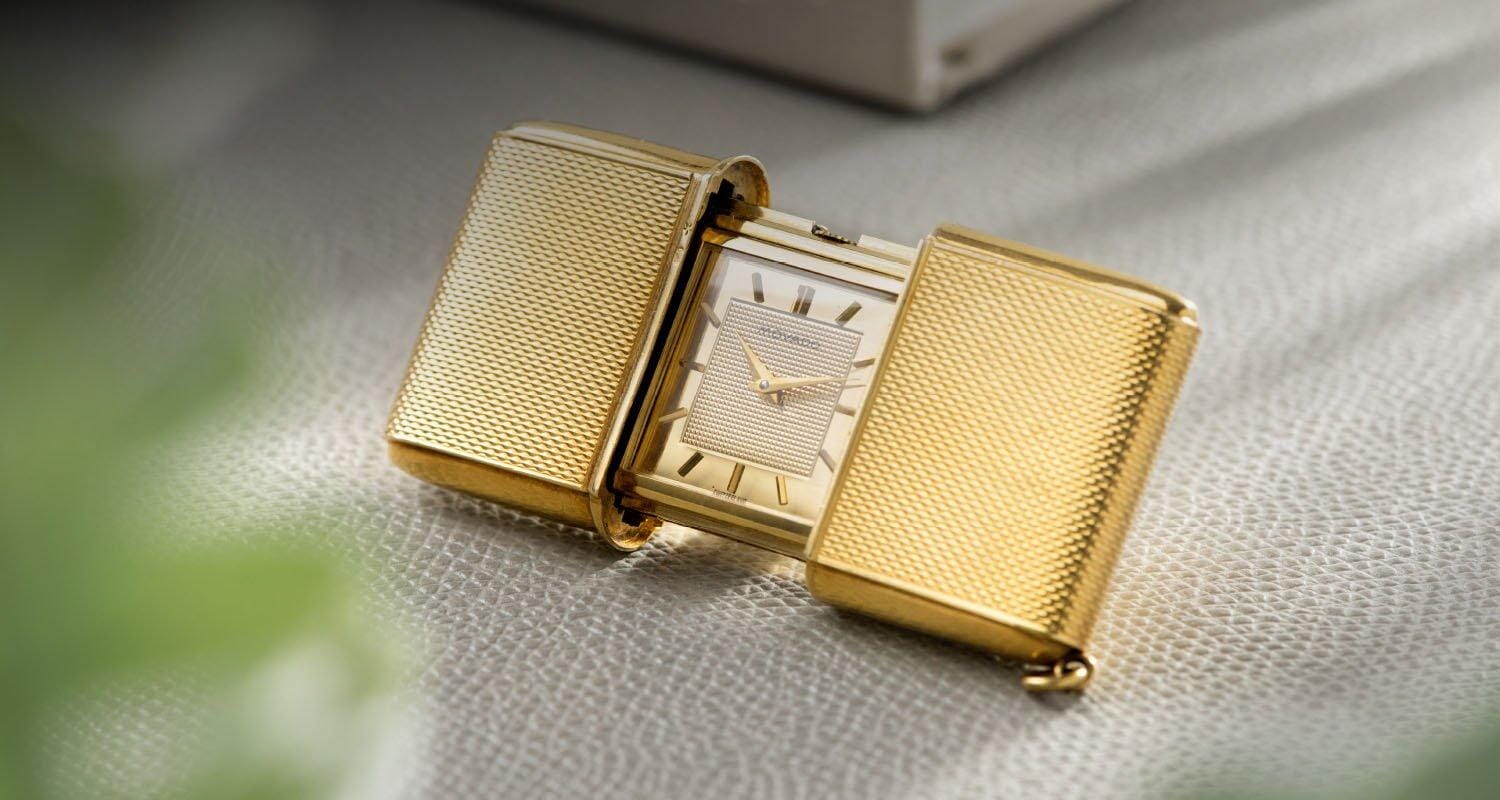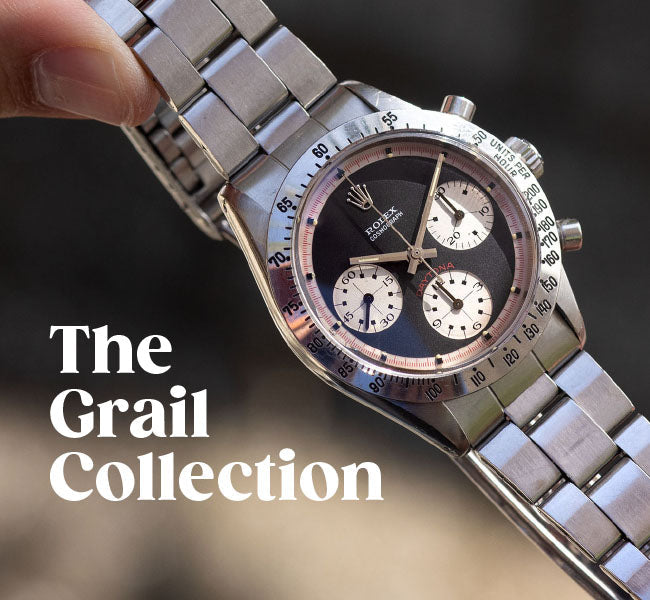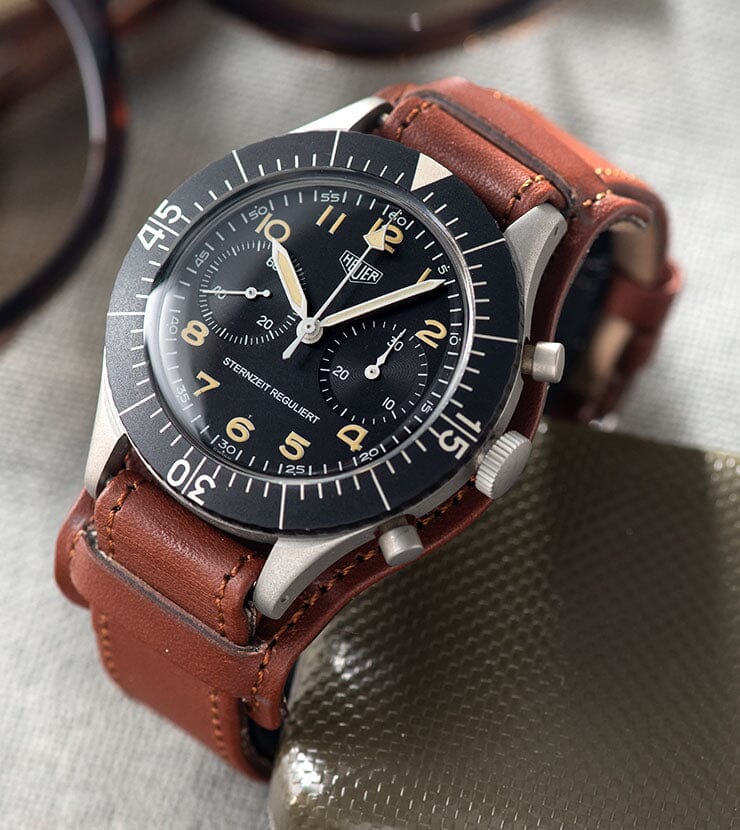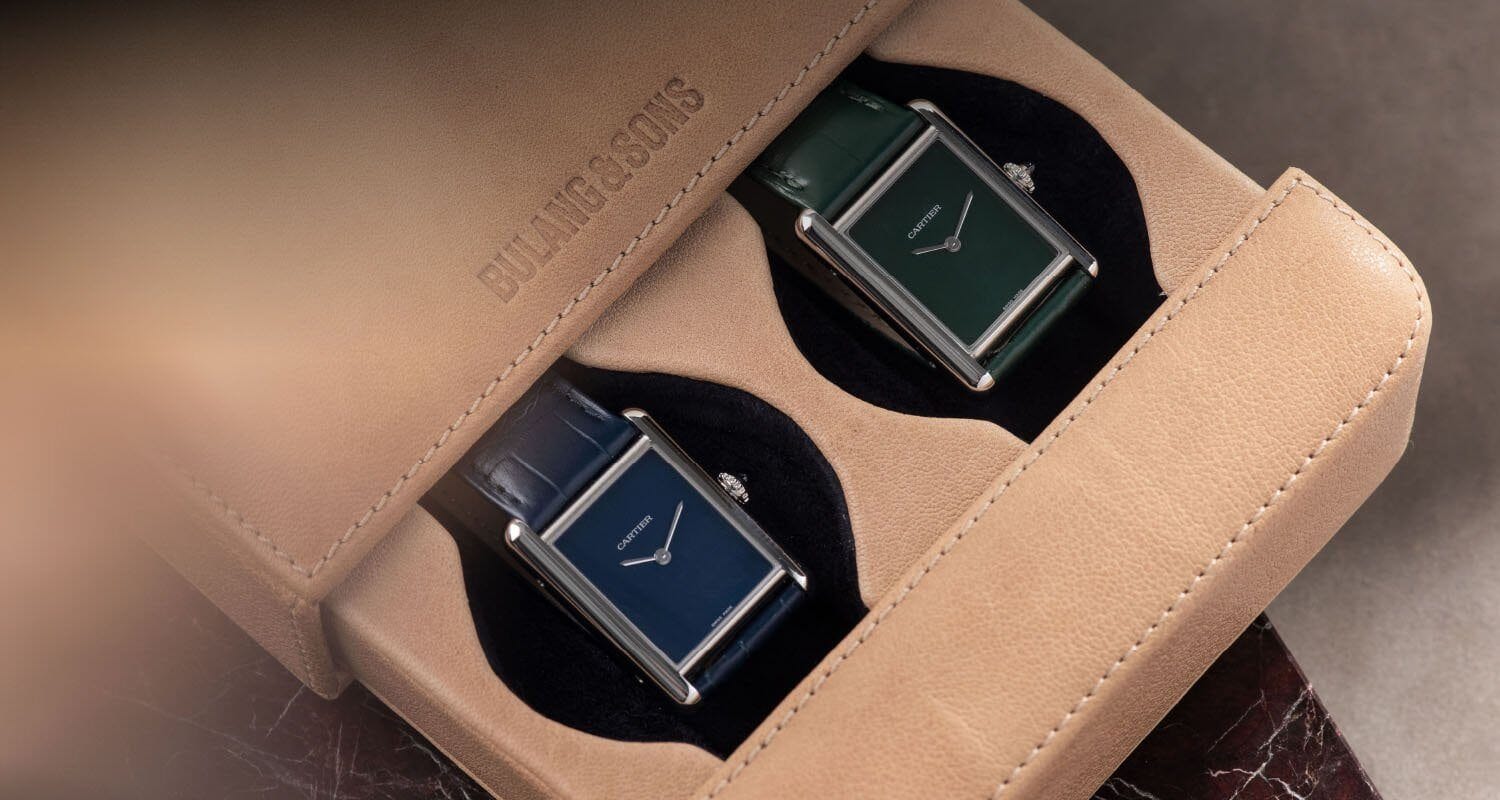
Sliding Doors – The Movado Ermeto Watch
 The Modvado Ermeto watch first saw light in 1926 and had an impressive run of 59 years until it ceased production in 1985. Tactile and handsome in equal measure, the Ermeto watch was designed to be used in the same way as a pocket watch and afforded the watch full protection, much like a full-hunter pocket watch. Overlooked by collectors for many years, we have fallen in love with these quirky pieces and want to share our love of one of Movado’s most enduring timepieces with you all today.
The Modvado Ermeto watch first saw light in 1926 and had an impressive run of 59 years until it ceased production in 1985. Tactile and handsome in equal measure, the Ermeto watch was designed to be used in the same way as a pocket watch and afforded the watch full protection, much like a full-hunter pocket watch. Overlooked by collectors for many years, we have fallen in love with these quirky pieces and want to share our love of one of Movado’s most enduring timepieces with you all today.

Movado, whilst an American company now, can trace its roots back to Switzerland in 1881. Founded by Léopold Achille Isidore Ditesheim, the company was known as Ditesheim & Freres SA for the first 24 years of its existence before becoming Movado in 1905. An interesting fact for watch trivia buffs is that until 1999, Movado owned Piaget. A very different brand now, its watches from the 1930s to 1950s have become very keenly sought after by collectors, especially the steel chronographs that have skyrocketed in value of the past half-decade.
Seal The Deal
Off the radar is the Movado Ermeto watch, a name that is derived from the Greek for “hermetically sealed”. Holding the watch in your hand you can easily see why the name is perfect, as the watch is case between two sliding outer sleeves, almost like a shell. The two ‘shells’ can be slid apart to reveal the watch within and then closed to cover and protect the concealed timepiece. Whilst now technically hermetically sealed like a Rolex Oyster case, the watch was well protected from dust, water spills and shocks when closed. The concept was not unlike the Jaeger-LeCoutre Reverso or Cartier Tank Basculante in so far as the face of the watch was protected. The Ermeto, however, took the idea a step further to offer all-round protection.
 The Ermeto was originally available in four different sizes depending on your preference. The largest was the Pullman at 100mm wide and 70mm high. Then came the Master at a more modest 54 by 37mm size and the Normal that was 48 by 34mm – both very similar in size. The final size was marketed at ladies and was referred to as the Baby, was 43 by 26mm and was intended to be worn on a chain around the neck or placed in a purse.
The Ermeto was originally available in four different sizes depending on your preference. The largest was the Pullman at 100mm wide and 70mm high. Then came the Master at a more modest 54 by 37mm size and the Normal that was 48 by 34mm – both very similar in size. The final size was marketed at ladies and was referred to as the Baby, was 43 by 26mm and was intended to be worn on a chain around the neck or placed in a purse. 

Function and Form
Whilst the closing case was perfect for keeping your watch safe and sound, the sliding doors had a fully functioning purpose. The wound the watch! Opening and closing the watch six times was enough to fully wind the watch for a 24-hour period. It was after one year of production, that in 1927 Movado’s founder’s brother invented the mechanism to wind the watch using the case. The system was simple in execution but genius in design. Each case side was fitted with a rack that engaged a pinion to wind the stem of the crown. The simple sliding of the case therefore roatted the winding crown, thus negating the need for the user to do so. The movements that Movado used for these watches were fitted with clutches, so as it was impossible to overwind the movement too. This was key as most people would check the time more than six times per day.

From 1930 onwards the watches were mostly fitted with hinged stands too, that allowed the timepiece to be used as a bedside or desk clock when open. The leg would automatically ‘pop out’ when the case was opened. The case design itself was offered to Movado by Swiss case maker Huguenin Freres in Le Locle. The patent was granted in 1927 and included the automatic winding system. This was a smart move as it stopped other makers producing similar watches. There were other manufactures that produced watches in sliding cases, but they were prevented from making them automatically winding, and so Movado had the monopoly on the market.


Cases, Coverings and Commissions
Over the watch’s lifespan, the Ermeto was available in a large number of materials. Examples have been known is platinum, gold, silver, steel and plated metals. The cases were often decorated too, with animal skin coverings such as lizard and calf leather as well as enamel and lacquer.
 The watches were a success and were adopted by the stylish set of the era, which led to a number of highly prestigious retailers and brands taking the opportunity sell the watches. The most famous and sought after of all are the Ermetos that were retailed by Cartier. Cartier signed Ermatos were almost always in precious metals, such as 14kt or 18kt gold, and the dials were either Modavo and Cartier double-signed or simply signed Cartier on the dial. Italian collector andfriend of Bulang and Sons Carlo Biagioli has been a fan of these watches for many years. Says Biagioli, “I have a Movado Ermeto in 18K gold that was a custom, ordered by the prestigious Cartier jewelry who requested it to be customized with their logo. A real time capsule that has stood the test of time for one hundred years without any serious damage. It has a breathtaking charisma which is even more impressive in real life. Next to the condition and charisma, this watch amazes with the ability to wind it up by simply closing and opening its case – a revolutionary technology at the time that is still impressive today due to its constant functionality. The watch came from an important Italian collection."
The watches were a success and were adopted by the stylish set of the era, which led to a number of highly prestigious retailers and brands taking the opportunity sell the watches. The most famous and sought after of all are the Ermetos that were retailed by Cartier. Cartier signed Ermatos were almost always in precious metals, such as 14kt or 18kt gold, and the dials were either Modavo and Cartier double-signed or simply signed Cartier on the dial. Italian collector andfriend of Bulang and Sons Carlo Biagioli has been a fan of these watches for many years. Says Biagioli, “I have a Movado Ermeto in 18K gold that was a custom, ordered by the prestigious Cartier jewelry who requested it to be customized with their logo. A real time capsule that has stood the test of time for one hundred years without any serious damage. It has a breathtaking charisma which is even more impressive in real life. Next to the condition and charisma, this watch amazes with the ability to wind it up by simply closing and opening its case – a revolutionary technology at the time that is still impressive today due to its constant functionality. The watch came from an important Italian collection."

 Alongside Cartier, other brands that retailed Ermetos were Hermes, Tiffany & Co and Van Cleef & Arpels. As collecting vintage luxury items has blown up over recent years, these watches appeal to both lovers of horology and collectors of the prestigious luxury brands of the 20th century.
Alongside Cartier, other brands that retailed Ermetos were Hermes, Tiffany & Co and Van Cleef & Arpels. As collecting vintage luxury items has blown up over recent years, these watches appeal to both lovers of horology and collectors of the prestigious luxury brands of the 20th century. Bulang Loves Ermeto
The fact these watches have such a wonderful history makes them super interesting to the collector and them still being under appreciated by the masses makes them a good opportunity for collectors looking for something a little different. Bulang and Sons founder Bernhard Bulang is a big fan. “I love these watches, as they have such a cool story and were incredibly innovative back in the Art Deco era when they were first launched. The quality of the Movado movements is first rate and so I love finding these high-quality collectibles to offer to our customers. The huge variety of models, cases and dials make them interesting too. And I’m pretty sure you’re unlikely to bump into another collector rocking an Ermato at your next get togther!”We have a selection of Ermatos for sale. Check them out here.




